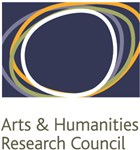Endangered complexity: Inflectional classes in Oto-Manguean languages
Project Overview
Project
Endangered complexity: Inflectional classes in Oto-Manguean languages
Project members:
Prof Greville G. Corbett
Dr Matthew Baerman
Prof Dunstan Brown (University of York)
Dr Enrique Palancar
Dr Timothy Feist
Period of award
March 2012 - February 2015
Funder:
Economic and Social Research Council (ESRC) and Arts and Humanities Research Council (AHRC)
Languages may express grammatical meaning by inflectional morphology, namely changes in word form: for example, in English, the ending -s is added to a verb form to show that it has a third person singular subject in the present tense. While English is fairly simple in this respect, there are other languages whose systems are more intricate. In particular, words may cluster into different classes according to the way they inflect, as in Spanish, where the ending for 'we' in 'we sing' (cant-amos) differs from the one in 'we want' (quer-emos), which in turn differs from the one in 'we open' (abr-imos).
In functional terms inflectional classes are apparently useless: the variation is quite independent of meaning, and must simply be memorized. But such systems are widely found across the languages of world, are highly structured and remarkably resilient over time. They represent a uniquely morphological sort of complexity whose implications for theories of language and the mind have yet to be adequately evaluated.
To date our knowledge of inflectional classes is largely based on European languages, and as such is limited by their typological characteristics. In this project we propose to expand our horizons beyond this, focusing on the Oto-Manguean language phylum, which displays such an unparalleled diversity and richness of inflectional class systems that it can serve as a model of nearly the full range of typological possibilities.
The Oto-Manguean languages are spoken in Mexico, and number about 200, many of which are threatened or endangered. Their inflectional morphology takes on a rich array of forms, involving suffixes, prefixes, complex tonal patterns and stem alternations, all of which may fall into different inflectional classes. And since suffixes, prefixes, tone, etc. can co-occur in a single word form, this may result in the interaction of multiple layered inflectional classes, drastically increasing the complexity of the systems. The Oto-Manguean languages provide important evidence of the degree of the limits of inflectional idiosyncrasy that a language can tolerate.
The project asks the following research questions:
- What are the degrees of inflectional class complexity?
- What is the relationship between frequency and morphological irregularity?
- How do inflectional classes arise and decay?
We will address these questions by conducting four separate studies based on three samples of languages. Two of the samples will become large databases of 15 languages: one on inflectional classes and another on their verbal lexicons. The databases will be made publicly available over the internet, joining other Surrey Morphology Group databases. The richness of the data means that we can expect substantial progress in understanding this area of complexity, which is unique to human language. It is important to undertake the research quickly, since the key languages are being lost at a disturbing rate.



